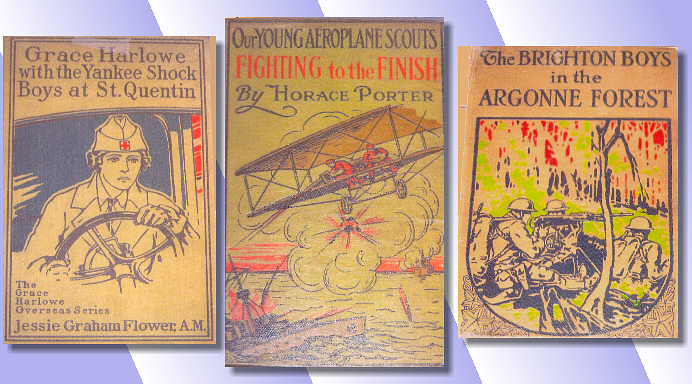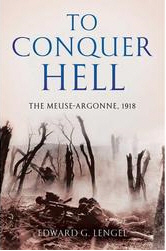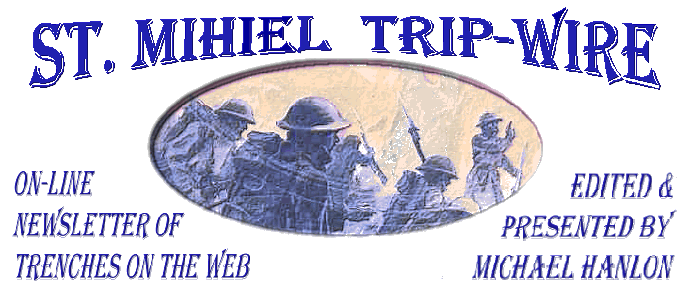
TRENCH REPORT: Honoring your World War I relatives -- One of the growth areas brought on by the Internet has been genealogical research. Every month I receive several dozen inquiries about how to find out in which unit a family member served or how to get ahold of military records or what to do with newly discovered letters, diaries or photos from the war. I try to answer as best I can and have compiled an FAQ (Frequently Asked Questions) page at our Doughboy Center, since most of the questions come from American readers. Take a look at this page if you are trying to research a veteran: (link) MH
This Month's Internet Feature
World War I Espionage
Guess who has a fascinating on-line archive about WWI Espionage? Yep - the CIA. Here are some of their articles:
The Kaiser Sows Destruction (pdf file)
Okhrana Agent Dolin: Gambler against the Russian revolutionaries and wartime double agent with the Germans
The Exploits of Agent 110 [Allen Dulles] (pdf file)
The Okhrana's Female Agents: Part I
The Okhrana's Female Agents: Part II
Postal Forgeries in Two World Wars (pdf file)
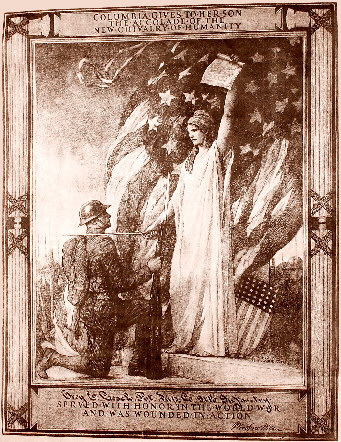
Wound Certificate Signed by President Woodrow Wilson
For Troy Leach Sr., 9th Inf., 2nd Division, (Thanks, Robin Clayton)
New at Our Own & Our Friends' Great War Websites
Click on Title or Icon to Access
|
Our Friends
At Great War Society Sites
At the WFA-USA
|

When you place your right hand over the left side of your chest to honor the fallen, you are not placing it over your heart - you are covering your medals, in a gesture which owes its origin to the ceremony in London's Whitehall on Armistice Day, 1920, to unveil the Cenotaph. A funeral procession accompanying the remains of the Unknown Soldier, which had arrived from France the previous day, was to march past the Cenotaph, then proceed to Westminster Abbey. The regimental sergeant-major of the Guards regiment conducting the ceremony decreed that all would salute the Cenotaph as they marched past by placing their hands over their medals.

War Memorial, Salzburg Austria
In memory of Imperial and Royal Field Artillery Regiment 41
and of their fallen comrades-in-arms
To the dead of the Second World War and of the Federal Army
Contributed by Sidney Clark
|
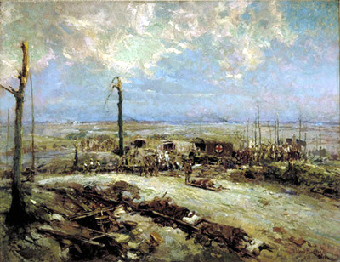
Dressing Station at Arras
Alfred Bastien, 1915
GREAT WAR 2008 EVENT CALENDAR
|
WFA-USA National Seminar
Carlisle Barracks, PA
America's Great War -
America's Great Warriors
September 12-14 2008 (information)
|
World War I Fly-In
Campbell Field Airport Weirwood, Virginia, USA
Aircraft of All Scales, Re-Enactors, Artists, Collectors, Historians, Modelers, and Vendors
September 13-14 2008 Email Rob Waring at: greatwaraerodrome@yahoo.com for information
|
Western Front Association
U.S. Branch Chapter Meetings
Check for Your Region
Regularly Updated (details)
|
Great War Society Monthly Chapter Meetings
Berkeley, San Francisco and Palo Alto, CA
Regularly Updated (details)
|
Send additions/corrections:
Email Response
|

Memorable Event
|
The Battle of Amiens Opens

Black Day of the German Army
August 8, 1918
Click on Image To Learn More
|
|
Trip-Wire reader, contributor and international trench art authority Jane Kimball is exhibiting five pieces at this event in Madrid: 1914! THE AVANT-GARDE AND THE GREAT WAR. The exhibit is open and runs until November 1st at the Museo Thyssen-Bornemisza. Jane plans to visit the exhibit shortly to make sure her items are properly displayed and has promised photos for our future issues.
France's Eternal Flame Visits the Champagne: The Association du Souvenir aux Morts des Armées de Champagne (which is based at Navarin Farm) will organize a relay to carry the Eternal Flame, lit at the Arc de Triomphe in Paris, from Suippes (Champagne) to Navarin on 14 September 2008. The families of French soldiers who died for France in the Great War have been invited to take part.
 (a) Combat power, with a rapid advance, becomes weaker and, on reaching the combat-power change-about point [where the balance shifts to favor the opponent], comes to a standstill.
(a) Combat power, with a rapid advance, becomes weaker and, on reaching the combat-power change-about point [where the balance shifts to favor the opponent], comes to a standstill.
(b) Confusion produced by the first impact of attack calms down with the passage of time, and the terror effect decreases with the passage of time.
(c) The fighting spirit of the attacker is heightened by the intensity of power, being highest at the time of initial impact, and gradually weakens from enemy resistance.
From an Imperial Japanese Army Critique of the Schlieffen Plan
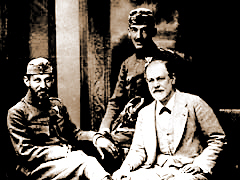
Father of Psychoanalysis Sigmund Freud
With Soldier-Sons, Ernst (l.) and Martin, 1915
Add renowned Scottish nutritionist Lord Boyd Orr to the list of Nobel Laureates (Peace, 1949), who fought in the Great War. He served first in the Royal Army Medical Corps, earning two decorations for bravery in action, then in the Royal Navyand, finally, simultaneously in both, for he was loaned by the Navy to the Army to do research in military dietetics.
In the years following the Second World War, Boyd Orr was associated with virtually every organization that has agitated for world government, in many instances devoting his considerable administrative and propagandistic skills to the cause. He died in 1971 at age ninety.
|
|
Covers of Children's Books From the War
From the Collection of Reader/Contributor Bob Ford
|
|
|
|
Page Two
|
|
|

Mr. Chiarello Receiving a Decoration Recently |
Francesco Chiarello, 109, the last known soldier to have seen action in both World Wars died on June 27, 2008 in the Calabria region where he was born and spent his life. He participated in the last Italian battle of the Great War at Vittorio Veneto and was recalled to service in 1940. Italy now has one remaining veteran of the war. (link)
Click Here to See the Worldwide List of Surviving WWI Veterans
|

|
An Argonne Mystery
Readers' Help Sought!
By Christina Holstein
|
Near the Romagne Cemetery in the Argonne Forest area behind the village church of Cunel, there is an interesting memorial honoring three Americans who died for liberty. It has no explanation as to why these three men are grouped together at the site -- only one was killed in the area. We would like to discover why these three individuals are grouped together and honored at this particular site.
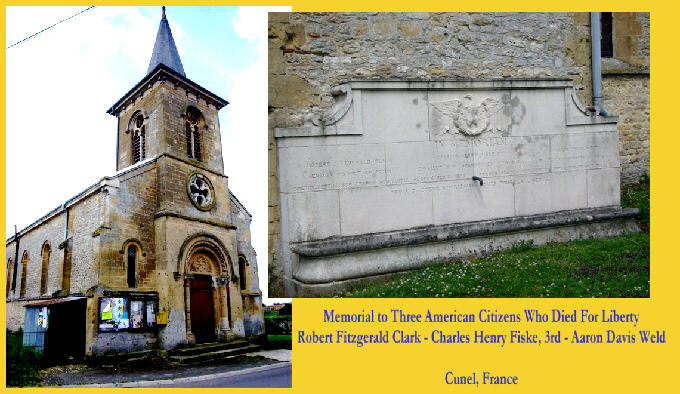
The three are:
- Ensign Robert Fitzgerald Clark, USN, who was killed in a naval air crash at Brest in August, 1918.
- 2nd Lt. Charles Henry Fiske, 111th Inf., 28th Division who was also killed in August near Fismes during the Second Battle of the Marne.
- 1st Lt. Aaron Davis Weld, 7th Inf., 3rd Division, whose unit was fighting near Cunel when he was killed in October, 1918.

Here are the clues we have gathered thus far:
- All three were students of Harvard College and are listed at Harvard's war memorial along with 370 others who died in service during WWI.
- They were in different classes at Harvard and, as noted, served in different military units during the war.
- The monument indicates Boston as their common hometown, but this does not seem to be accurate. Fiske was from Weston, Massachusetts.
- Fiske's family dedicated scholarships to their son at both Harvard and Trinity Colleges.
- Only Weld has a connection to Cunel, or the Argonne region for that matter.
- Two of them are buried in France: Weld is buried at the nearby Romagne Cemetery; Fiske is buried at the U.S. Cemetery outside of Paris. Clark was apparently repatriated home.
This is all we have learned about these three individuals. If you know or can discover why they are collectively honored at the Cunel memorial please contact me at: (verdun@pt.lu).
|
Trench Warfare Did Not End With World War I:
The Orwell Trenches of the Spanish Civil War
Contributed by Tony Langley
|
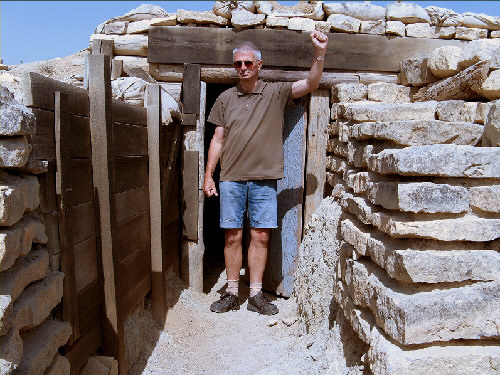
Our Contributor Showing Solidarity
British writer George Orwell (pseudonym of Eric Blair 1903-1950) is justly renowned for his books 1984 and Animal Farm. Prior to publishing those works, he described his experiences as a volunteer on the Republican side during the Spanish Civil War in Homage to Catalonia (1938).
After arriving in Spain in December 1936, he joined the anarchist POUM (Partido Obrero de Unificación Marxista - Workers Party for Marxist Unification) militia more by happenstance than for any specific ideological reason and after a short and laughable training in Barcelona was stationed on the Aragon/Huesca front, in the semi-arid and remote Monegros (Black Hills) region. This was one of the few regions where static warfare prevailed for a long period of time during the Spanish Civil War, and, as a result, more or less permanent trench systems and fortified positions were built. Owing to their remoteness and the semi-arid climate prevailing in the Monegros, many of these are still visible and in relatively good condition today and worth visiting.
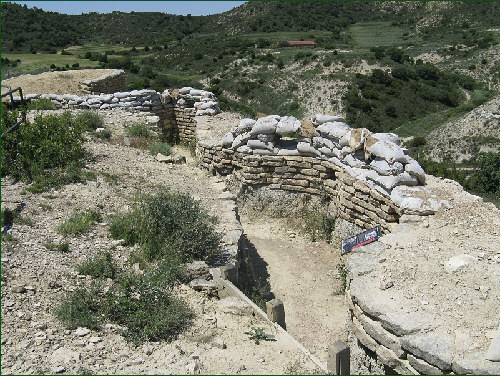
"Over the Top" Look
Orwell was stationed in the village of Alcubierre, which gets a less than sympathetic description from Orwell in 1937. Now things have changed, and the village has evolved with these modern times, so much so that several years ago the exact same trenches where George Orwell served from mid-February for three weeks before being near-mortally wounded, have been expertly restored and made easily accessible to the public.
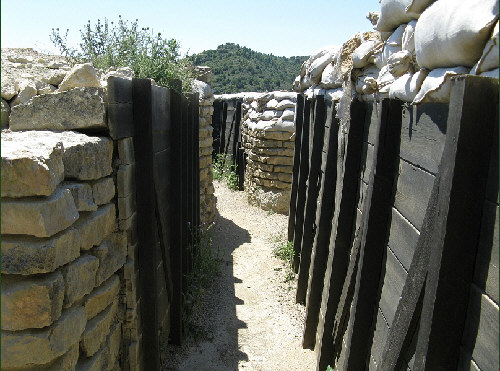
"In the Trenches" Look
Spain is an archeologist's playground, even without restoration of Civil War sites. With the Orwell trenches, the same high standards were applied regarding authenticity in use of materials: natural stone, weatherworn tree trunks and branches, dried shrub and thorn, scavenged old doorways. The sandbags used in the restored trenches are even made of actual burlap and sand, not the usual concrete with burlap relief as used in most sites in France and Belgium. This little touch may be somewhat optimistic regarding the longevity of these sandbags, even in a virtually rain-free climate, but it does confer that extra touch of authenticity.
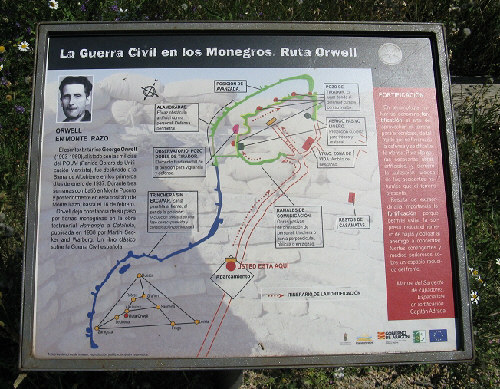
Informational Kiosk Discussing Orwell's Service
Due to the rigorously hilly terrain, the front in the Monegros sector was not formed into a continuous line of trenches, but rather into a series of distinct strong-points and fortified positions that were mutually supportive. Trenches would run for several hundred meters around the forward slopes of hills before petering out into inaccessible terrain. Use was made of barbed-wire and Spanish riders, to protect the trenches from infiltration and enemy raids, but barriers made of thorn/shrubwood and branches were often just as effective and abundantly available.
There are similarities with Western Front trench systems of course, trenches being essentially but ditches in the earth. The abundance of natural stone in Spain, however, gives the Orwell trenches a look that is often similar to those on the Italian Front in the lower Alps. Sniper or machine-gun positions are made of natural stone walls, usually curved and often sheltered with wooden beams again covered with natural stone, earth or sandbags. Sleeping, cooking or weather shelters were constructed of natural stone, much like a rural goatsherd-shelter, while blankets or scavenged doors were used to keep out the wind and cold, which Orwell described as being penetrating and debilitating in this part of Spain in winter.

In Spain's Fields the Poppies Blow |
A general consciousness of the Spanish Civil War is slow in coming to the new post-Franco Spain. However, during these last years it is evolving, and the restoration of the aptly and poetically named Orwell Trenches in Alcubierre is a sign that things are changing. A further section of these trenches is earmarked for restoration in the coming years, and some 15 km behind the former Republican lines, concrete bunkers constructed by Republican agrarian collectives have also been restored.
Other Civil War sites worth visiting in the region are the totally destroyed and preserved towns of Belchite and Roden. These are haunted places, the ruins looking as if fighting had ended but a year or so ago. No attempts have been made at clearing rubble or lining off dangerous areas. Visitors can walk among the ruins of houses and buildings and imagine they are making their way among any of the destroyed villages and towns on the Western Front. The scent of rosemary and wild mountain thyme, crushed underfoot while walking the parched earth, hints to the difference in location and conflict. But here in Spain, too, poppies grow abundantly amongst the ruins and old trenches, indicating at least some type of communality between these two 20th century wars, separated so little in time, but so much in ideology.
|
|
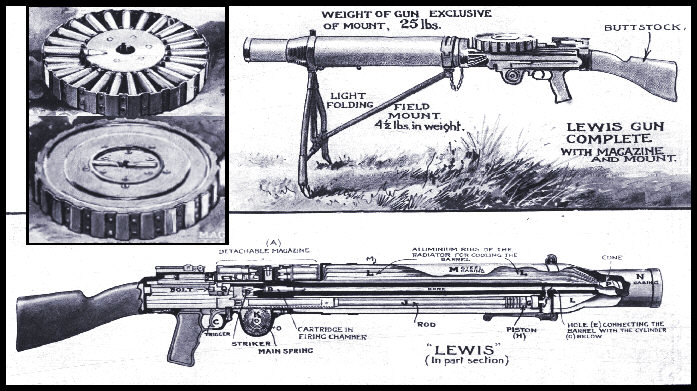
|


Shell Damage to Louvain, Belgium Cathedral, Hôtel de Ville and Library
(Published in Early 1915)
Click Here to Visit War in a Different Light
|

|
1918 on The Western Front
By Tony Noyes
August
The "Last Hundred Days" Begin
|
On 24 July Foch had held a meeting with Pershing, Haig and Pétain to urge that they all abandon the defensive attitude adopted until then. The Americans were recently successful in cutting the main German supply road from Château-Thierry to Soissons and were now able, with French assistance, to recover the ground lost after the May-June-July offensive which had started on the Chemin des Dames. For the first time, Marshal Foch made mention to Pershing of the reduction of the St. Mihiel Salient, which would be assaulted in September.
There are eighteen separate battles noted for August 1918 in France and Belgium, all in keeping with the previously agreed intent of keeping the German Armies constantly in action over a total distance of approximately 200 miles. The French and British carefully managed the boundaries and timing of each individual action, thus ensuring that the Germans continued to be kept off balance in this month. In the temporarily quiet Somme sector, Australian forces adopted a policy of unique and continuing trench raids, always designed to keep the Germans worried.
In general terms, these operations were all "bite and hold" actions, the most famous being the Battle of Amiens, which started on 8 August. This battle was notable for the organization of all arms and the use of tanks in similar fashion to Cambrai in November 1917. The Royal Air Force even made parachute drops of small-arms ammunition, and carrier tanks were used to bring ammunition to the guns.
These tactics became the model for fighting these last hundred days (and indeed of the war in Europe in 1944). This period is also notable for General Haig's Army Order, of which a part urges "the necessity for all ranks to act with the utmost boldness and resolution in order to get full advantage from the present favorable position. Risks which a month ago would have been criminal to incur, ought now to be incurred as a duty. It is no longer necessary to advance in regular lines step by step ….".
|
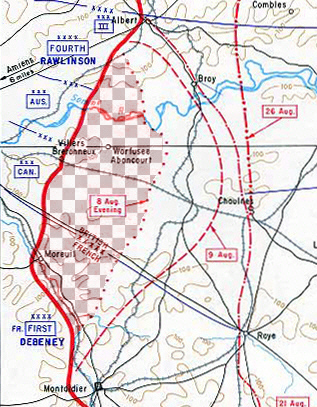
Opening of Battle of Amiens - August 8, 1918
Hatched Area Shows First Day Advance
Coincidentally, the Spanish influenza, which started taking a hold in the middle of June (at Camp Funston, Kansas), was roaring through England, France, Germany and the Americas, causing millions of deaths worldwide.
General Foch was promoted Marshal of France on 6 August and remained Generalissimo, organizing the Allied armies until the end of the War.
It is worthy of note that munitions workers in the UK chose these times to strike!
|
If you are travelling to Europe and would like to visit these fields of memory for a detailed tour, please contact experienced guides Tony Noyes or Christina Holstein at Verdun Tours
|
|
Subscribe to Our New On-Line Magazine
|

|
|
|
Page Three
|
 |
To Conquer Hell: The Meuse Argonne, 1918,
by Edward G. Lengel
Reviewed by Len Shurtleff, Editor of Len's Bookshelf
|
This is a detailed and long-overdue examination of this most bloody battle, actually a six-week-long major campaign of World War One. There have been only two book-length studies of the Meuse-Argonne since 1985: Paul Braim's The Test of Battle (Univ. of Delaware, 1987) and Robert Ferrell's America's Deadliest Battle (Univ. of Kansas, 2007). Braim's work was long on detail and short on cogent analysis; Ferrell was long on analysis but short on tactical detail. Lengel's work is full of both, based as it is on a thorough study of primary and secondary sources including first-person accounts and unit histories.
Attacking across broken, hilly ground held by deeply entrenched German forces since 1914, the American First and Second Armies took over 120,000 casualties, including 26,000 dead. Yet, this was a combined-arms battle involving both tanks and aircraft in both the scouting and attack modes. It was also a hard learning experience on a steep curve for inexperienced American infantry leaders and artillerists, who learned their trade in a series of costly frontal attacks. Logistics, despite the careful planning of George Marshall and other skilled operations officers, was also an issue. Massive traffic jams hampered the attack for days and led to French calls for AEF commander Pershing's removal. Indeed, problems of food and ammunition supply and evacuation of the wounded were not resolved until after a mid-campaign pause for rest and reorganization.
In all, you will find here many accounts of the participation of future American military leaders (MacArthur, Marshall, Patton), as well as details of the individual actions, units engaged and analysis of results. These accounts will be familiar to specialists but new to general readers not familiar with the details of American participation in the Great War. And, here lies the value of this book: educating a new generation of readers.
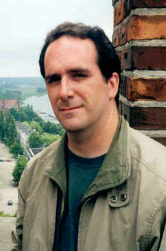
Author
Edward G. Lengel |

American Troops Advancing Near Montfaucon |
To Conquer Hell: The Meuse Argonne, 1918, Edward G. Lengel, Henry Holt, 2008, 491 + xiv pages, photos, maps, index, notes, bibliography, ISBN 0 8050 7931 9, $32.95 cloth.
The author teaches at the University of Virginia and is scheduled to speak at the September 2008 Western Front Association annual national seminar at Carlisle, Pennsylvania.
|
Professor Matthew Bruccoli, 1931-2008
Scholar, Student of the First World War and Friend
|
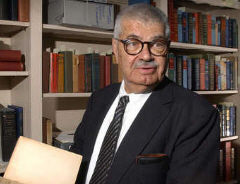
Matthew J. Bruccoli |
I made a new friend this past March and lost him by June. He was Professor Matthew Bruccoli of the University of South Carolina, the world's leading authority on F. Scott Fitzgerald and the other authors of the Lost Generation. It was his work on the First World War, however, that led me to call him at his office one day -- I wanted to interview him about the series of WWI literary classics that is being reissued by his university's press under his guidance and about his two vast collections of publications, memorabilia and art from the war. I suspected the key to his enthusiasm for studying the war was the fact that all his projects are dedicated to the memory of his father Joseph, a veteran of the AEF, but I wanted to confirm this and learn more about the professor's projects.
After introductions and outlining my initial questions--the sources of his interest in the war, his father's military experience, the literary impact of the war--the professor, who I immediately read as being of the "gruff" personality type that does not suffer fools one iota, responded comprehensively. He held forth with passion, humor and enormous pride on all the topics I raised and on some I should have raised. He was both scathing and hilarious when I asked him how a patriot like himself got along in an academia now dominated by people hostile to American traditions and position in the world. Believe me, after hearing about his many battles in the halls of academe, it was clear to me that he taken on all comers in those struggles for forty years with glee and, I believe, with great success.
The key--as I anticipated--to all of his effort to encourage study and scholarship on the war was really his father and what I learned about him was fascinating. When Joseph Bruccoli was called to arms in 1917, he happened to bring along a unique skill. He could drive the difficult-to-learn Pierce-Arrow truck of the era, of the type that was being sold to the French Army. So he was detailed to a group of doughboys assigned to drive for the French forces, bringing supplies to the front line in every zone on the Western Front. This proved extremely hazardous for Joseph, who returned from the war wounded, shell-shocked and with eight campaign badges. Despite his rough period of service, though, he found the war had intensified his love and admiration for his country and especially those who served in her military. He passed these values on to his son Matthew, who was born at the height of the Depression. I found the respect and love that Matt expressed for his dad admirable and touching.
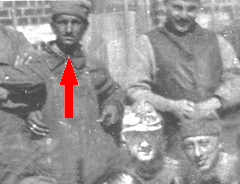
Pvt. Joseph Bruccoli, AEF |
Our further conversation involved a lot of discussion about the literature of the war, which I won't get into here. In the April Trip-Wire, we included a major article on the Joseph M. Bruccoli book series selected by Matt (link) and in our future issues, regular reviewer Len Shurtleff will be providing reviews of books from the series. At some point in our chat, however, some floodgate opened -- we realized we were dealing with kindred souls. He was excited to discover that I led tours to the battlefields and asked me to design and lead a tour for himself and a group of students next year. Then, we talked about my magazine OVER THE TOP, and he was particularly happy to hear we had published James M. Cain's "The Taking of Montfaucon", which he considers one of the best stories to come out of the First World War. Spontaneously, he offered a war story by Thomas Wolfe (Look Homeward, Angel, 1929) from his collection for publishing in my magazine. After two hours, or so, he had other matters to attend to, but we agreed to talk again when I returned from my spring trip to the Western Front. I looked forward to our future collaboration. Less than a week after our chat, I received a whole box of material from Matt, copies of all the books in the series published thus far, the Thomas Wolfe story and a list of places he wanted to visit with his students on the forthcoming trip to France.
I got back from Europe in early June and had a lot of catching-up to manage, having been away for over two weeks. On my to-do list, though, was renewing contact with the professor. You can imagine the shock I felt, then, when one of our readers sent me the announcement that Matthew Bruccoli had died of a brain tumor on June 4th. Apparently, he learned of his illness only a month before, so Matt went fairly quickly. His passing was a big loss both for American literature and for students of the Great War. For me, it was personal blow. Our direct contact had lasted no more than 120 minutes, but I really liked that man and looked forward to working with him. MH
|
|
World War I Headlines
in the
21st Century
|
|
The Lost Battalion-Found!
By Andrew Melomet
Recently I pulled a VHS tape off the shelf to check its contents and found that I recorded the 1919 silent version of The Lost Battalion when it was aired during the American Movie Classics Channel 6th Annual Film Preservation Festival in the summer of 1998.
Directed by Burton King and produced by Edward MacManus (former head of Hearst's International Film Service), this version was restored by the Library of Congress and runs approximately 67 minutes. What makes this release so interesting is the fact that it was released in July 1919 (within 8 months of the Armistice) and featured some prominent members of the original "Lost Battalion" in the cast. It is generally considered one of the first "reconstructed documentaries." The opening title states, "For the first time in the history of the world, you are to look upon a motion picture re-enacted by those who live again the historic events for which a grateful nation commended them."

Actual Lost Battle Survivors At the Site at the Time of the Filming, 1919
Appearing as themselves are Major-General Robert Alexander, Lt. Col. Charles W. Whittlesey, Major George McMurtry, Captain William J. Cullen, Lt. Arthur F. McKeogh, Lt. Augustus Kaiser, Private Jack Hershkowitz, Corporal P. Cepaglia, Sergeant Herman J. Bergasse, Private J.J. Munson, Private J. W. Rosson and Private Abraham Krotoshinsky. Even Cher Ami, the heroic carrier pigeon, played himself.
The inter-titles often refer to the 77th Division as a "melting pot." A term first popularized in 1908, with the play "The Melting Pot" by Israel Zangwill, about the immigrant experience in pre-war America. The recurring theme of democratic diversity would appear in numerous war films through out the decades.
Among the fictional draftees in the division are two Chinese-Americans from feuding Chinatown tongs, a burglar who assumes another man's identity to escape the law (Sydney D'Albrook), the son (Gaston Glass) of a wealthy man in love with his father's stenographer, and "The Kicker" (Jack McLean), an office worker who finds fault with everything. Opening scenes include some exceptional aerial photography of Manhattan in 1919. The tallest building seen is the 57-story Woolworth Building, the tallest building in the world until 1930.
The plot follows the men through training in Yaphank, Long Island and in Pas de Calais, France before entering the Meuse-Argonne Offensive. The original artwork by Augustus Kaiser is used to illustrate the inter-titles, and animated maps effectively portray the advancing offensive line and the eventual encirclement by the enemy. The location used for the battle sequence was selected by regimental engineers as conforming closely to the actual battlefield in the Argonne.
The version restored by the Library of Congress is incomplete and adds some difficulty to following the epic battle and other scenes. Original Signal Corps footage is used to depict the training, some battle scenes, the welcoming triumphant parade in New York City and the cemetery where the dead of the battalion are buried.
It was while trying to reach the battalion that professional baseball player Eddie Grant was killed. Look into our archives for more information on Eddie Grant: (link).
In July 1925 the poet Carl Sandburg saw The Lost Battalion and his subsequent review reads well as blank verse:
"The Lost Battalion, having its first run at the Monroe Theater, is a picture dealing
with a part of the 77th division in No Man's Land during the recent Great War.
These made their advance during an offensive in which they lost touch with the
French troops on one side and their own division on the other flank.
And they were caught and surrounded in a "pocket."
Without food or water, but with plenty of ammunition, they held off the enemy
while they tried to signal airplanes.
Their carrier pigeons were picked off by enemy rifles till at last one flyer, "Cher
Ami," got through, losing an eye and a leg.
And they sent out 37 couriers, each of whom failed to get through.
But the 38th man made it-and help arrived-and again there was food and water.
The scenes and actions of the pocketed doughboys are enacted on the film by the
same men and officers who were in the actual turmoil in France.
It is a story of adventure, daring, suffering, endurance and heroism-and as such is
a photoplay superior to many entirely of fiction."
Unfortunately, the 1919 version of The Lost Battalion has never been officially released on DVD. Copies do show up on the internet but I can't vouch for their quality.
The 2001 film version of The Lost Battalion, directed by Russell Mulcahy and starring Rick Schroeder as Major Charles Whittlesey is readily available on DVD. Bison Books has recently republished The Lost Battalion by Thomas M. Johnson and Fletcher Pratt.

Trip-Wire Editor Mike Hanlon (Yellow Slicker) Leads a Group Visiting the Lost Battlion Hillside, 2006
Other films of interest that include actual participants as reenactors include: Theirs Is the Glory, 1946, was released about the World War II battle for the Arnhem Bridge during Operation Market-Garden. It was filmed on location in Arnhem, and it features the actual officers and men of the British paratroop force portraying themselves. In 1948 Sands of Iwo Jima was released with the actual surviving Mount Suribachi flag-raisers reenacting that event.
Andrew Melomet, Proprietor of Andy's Nickelodeon, will answer your Great War film or video inquiry. He is also soliciting your recommendations for the WWI Filmography he is compiling for our readers. Just click HERE.
|
|
| | |




